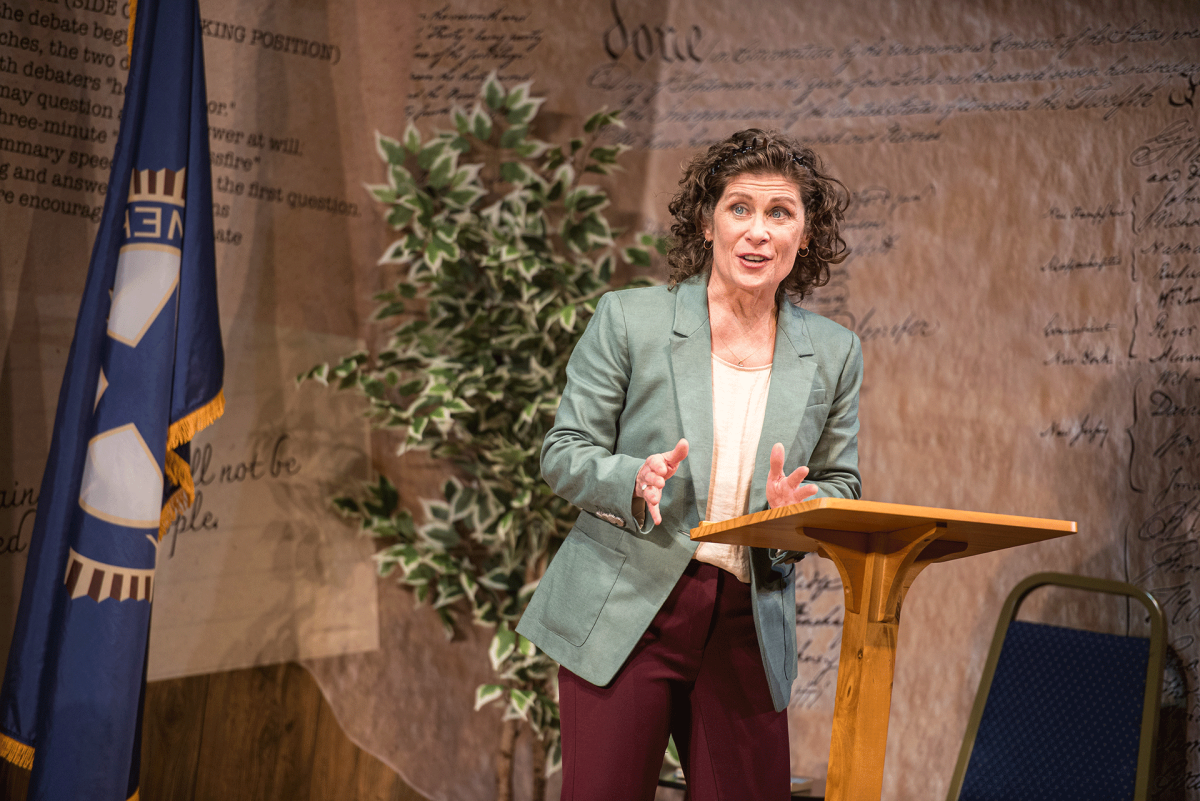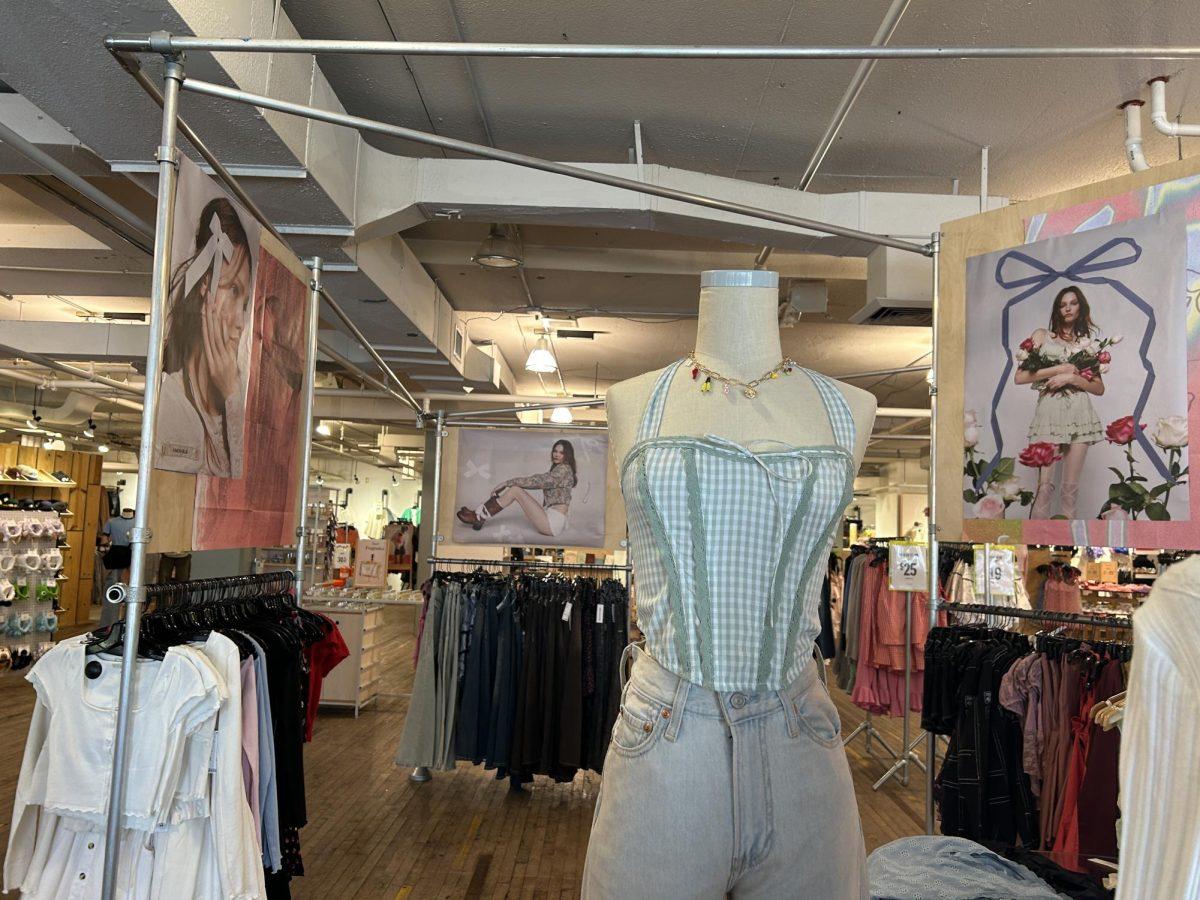In a 300-person lecture at the University of Wisconsin, it is pretty much expected that students’ faces will remain nameless in the professor’s mind all semester. But, what if, in a small seminar class of 24, an educator outright refused to learn the small handful of students’ names – and instead handed out a deck of cards, assigning each person a new name for the next eight weeks such as “the three of hearts” or “the king of spades.”
This practice might be unorthodox, or even insulting. But when the professor is acclaimed cartoonist Lynda Barry, the Arts Institute’s artist-in-residence for UW this semester, anything goes. And her students have quickly come to realize that her pedagogical unorthodoxy comes from a place of caring.
Her course, “What It Is,” named after her book of the same title, utilizes this technique to get to know students first by their written work, and then by their personalities. For now, class time is meant for generating material – which can total more than 700 drawings or several short stories per class – without critique.
“We don’t talk about what’s produced at all,” the teaching assistant for “What It Is,” Lydia Conklin, said. Conklin is pursuing a master of fine arts degree in fictional creative writing, and has long been a fan of Barry’s work. “We don’t say we [like or dislike] a drawing, we just look at it and say nothing. It’s without judgment. … And since we are only identified by a playing card, you don’t even know who did it.”
Barry is primarily a writer and cartoonist, one who crafted the weekly comic strip, Ernie Pook’s Comeek, for 30 years. A Wisconsin native, she’s contributed to publications like Esquire and Mademoiselle, and written 17 novels – including a few of which she says “The bookstores don’t even know where to put them.”
Students hoping to enroll in Barry’s course found themselves answering questions as ordinary as “What classes did you take last semester”? to “What was a toy you hated when you were young”? or “What’s your favorite kind of monster”? To be the TA, Conklin found herself subjected to a questionnaire deriving from the same whimsy.
Promising applicants were those who answered these questions with vivid imagery, and would bring a diverse set of disciplines and mindsets to the table. Ninety applied, and less than 30 currently sit in the 2 1/2 hour class each week. However, others may follow the progress of the course through videos and posts on Barry’s blog, thenearsightedmonkey.tumblr.com.
She also has array of guest speakers, lectures and events planned that go beyond the course for the rest of the semester. A series of two writing workshops at the Madison Museum of Contemporary Art called “Writing the Unthinkable” is meant to be a miniature version of the “What It Is” course, allowing a larger number of people to sign up and reap some of the benefits of her lessons. Full descriptions can be found at www.arts.wisc.edu/artsinstitute/IAR/barry/events.
After applying nearly a year ago, Barry’s residency began in August. She commutes to campus from rural Rock County, Wis., and said being an artist-in-residence is the subject of a lifelong dream. The position has already become a clear asset to the artistic process she has had for more than 30 years, which involves analyzing the Image and its purpose. She said there are some things she cannot understand on her own, and that her students will be an integral part of answering the question “What is an Image?”
“[Artist-in-residency] is already influencing my artwork tremendously,” she said. “I’ve never had the opportunity to work with such amazing students for as long as I will be. For me it’s very much like writing a book or doing a painting, although I’m doing it with students.”
A phenomenon Barry sees in people between the age of 10 years and adulthood is the transition from making things with one’s hands (what she calls “the original digital tools”) to spending time on activities that will meet others’ expectations. She said there is a period where humans identify their own strengths and weaknesses, and then cease producing things they enjoy.
“Art gets separated from people’s lives and they feel like they can’t do it, and just watch other people do it,” she said. “But there’s an absolute biological function to this thing called the arts; we wouldn’t have carried it with us through all our evolutionary stages if it didn’t have some survival function. I think it has something to do with the feeling that life is worth living.”
Because of the detachment from artwork that comes with age, Barry wanted to make sure her students would start at a basic level and move up from level playing fields. In this, they have so far been tasked with the most basic hand-made artwork: coloring.
“Color crayons are not an easy material to use; for some people, they haven’t even used their hands to make stuff in a while, and when you remember coloring you forget that there’s an effort involved,” she said. “Part of [the assignment’s purpose] is to build up your hand muscle … Instead of making our crayons last, we’re trying to use them up and get as much color on the page as possible.”
Conklin feels Barry’s methods make the work more accessible than other creative writing courses she’s been involved with. The curriculum for “What It Is” begins with writing first-person memoirs, and will explore fiction before leading into students’ preferences.
“Everyone has childhood memories so that’s a way in for everyone,” Conklin said. “She’ll say, ‘Write a short story from your childhood about dogs,’ so then it’s easier to think of an idea. Same thing with a drawing. … Before, they had to freak out about what to draw and here they can just get into the rhythm of it again.”
Barry compared the state of most adults’ art to riding a stationary bicycle: By doodling in the margins of “serious” notes, we go through the motions but don’t get the full enjoyment of the ride. She finds this particularly applicable to the university community, and for that reason emphasizes the value of having an artist-in-residence – with public events that are accessible and free.
“Students now are overloaded and overworked; you get on your hamster wheel and go,” she said. “Being able to see working artists, take a break and activate parts of your brain will help you with the hamster wheel.”












